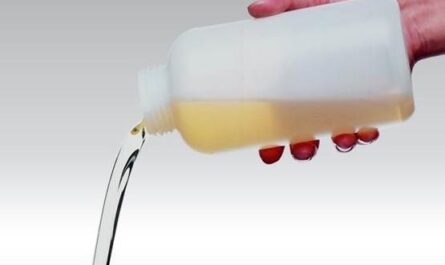Biopolymers are polymers produced by living organisms or contain monomeric units from biological sources. Due to their biodegradability and renewability, biopolymers have emerged as promising eco-friendly alternatives to fossil fuel-based plastics. In this article, we explore the various types of biopolymers and their potential applications.
What are Biopolymers?
Biopolymers, also known as natural polymers, are polymers synthesized in nature within living organisms. They can be classified into two types – intrinsic and extrinsic biopolymers. Intrinsic biopolymers are found naturally inside plant and animal cells, while extrinsic biopolymers are produced by organisms but located outside cells. Some common examples of intrinsic biopolymers include cellulose, starch, proteins, rubber, and DNA/RNA. Extrinsic biopolymers include silk, shellac, and amber.
Biopolymers have been an integral part of nature for millions of years. Cellulose, the most abundant natural polymer on Earth, provides structure and strength to plant cell walls. Proteins act as building blocks for living tissues, while chitin forms exoskeletons in insects and crustaceans. Nature has developed these biodegradable polymers to serve important functions while remaining environmentally sustainable.
Potential of Cellulose
Being the primary component of plant cell walls, cellulose is the most abundant biomaterial on the planet. It has played a crucial role in assisting photosynthesis and growth in plants. Due to its widespread availability, high strength and stiffness, cellulose holds immense potential as an eco-friendly substitute for oil-based polymers.
The cellulose market is projected to increase substantially in the coming years. Products like cellulose film, fabrics, and plastics derived from crops like eucalyptus, switchgrass and wood pulp offer viable renewable alternatives for traditional synthetics. Some key applications of cellulose include paper products, textiles, food additives, construction materials and packaging. Cellulose nanocrystals extracted from cell walls can enhance the strength and stability of various materials.
Advances in Starch Polymers
Starch is another plentiful natural polymer produced by plants for energy storage. It is made of glucose monomers connected by glycosidic bonds. While pure starch has limited uses, chemical modifications can alter its properties to suit diverse industrial needs.
Current research focuses on grafting methods to introduce functional groups onto starch and diversify its applications. Starch polymers and composites show promise in food packaging, hygiene products, pills and tablets due to their good film-forming ability, moisture retention and mechanical properties. Starch nanocrystals have emerged as sustainable reinforcing agents in Biopolymers Novel starch derivatives can perform equivalently to various types of plastics while providing superior sustainability traits.
Proteins and Chitosan
Proteins are essential to all living systems and the second most produced biopolymer after cellulose. Their unique ability to self-assemble makes them highly useful. Proteins from egg whites and milk are commonly used in food applications. Innovative protein polymers are finding applications in fibers, foams, adhesives, electronics, and medical devices.
Chitin, the nitrogenous polysaccharide found in exoskeletons of shrimp and crab, can be deacetylated to form chitosan. This versatile biopolymer exhibits antimicrobial and film-forming properties. Chitosan is employed in water treatment, biomedical, agricultural and packaging applications as an eco-friendly alternative to plastics. Researchers are working on reinforcing chitosan with natural fibers and fillers to develop novel biomaterials.
Thermoplastic Biopolymers
Polyhydroxyalkanoates (PHAs) are a class of polyesters naturally synthesized by microorganisms as carbon and energy storage materials. They possess thermoplastic properties resembling petroleum-based plastics like polypropylene and exhibit good biodegradability. PHAs have garnered much industrial interest as substitutes for conventional plastics in packaging, textiles and biomedical implants.
Cutin and suberin are two natural thermoplastic biopolymers derived from plant cuticles and bark which impart strength and protection from pathogens. They are attractive candidates for bioplastic films, coatings and composite materials. Research on utilizing industrial waste streams and optimization of chemical processes is refining their technical viability.
The Way Forward
To effectively utilize biopolymer potential, collaborative efforts are required spanning agriculture, biology, nanotechnology, chemistry and engineering. Large-scale production using sustainable resources is crucial for commercial viability. Genetic techniques can be employed to modify microbial metabolism for optimized biopolymer yields. Innovations are needed to synthesize biopolymers with tailored properties and processabililty.
With proper infrastructure development, biopolymers derived from biomass represent a multi-billion dollar global market opportunity. Along with renewability, biodegradability offers exciting new solutions for waste management challenges. Future innovations hold promise for fully substituting fossil fuel-based polymers by affordable, eco-friendly alternatives from sustainable biological resources in applications from packaging to construction. Biopolymers are set to play a key role in transitioning towards a circular bioeconomy.



